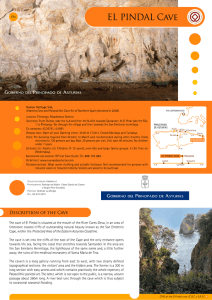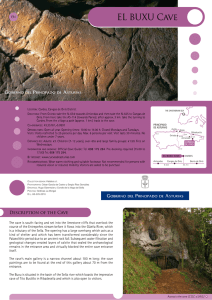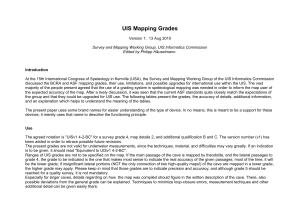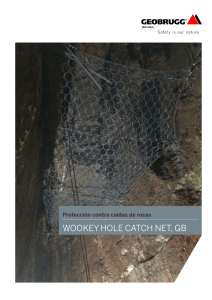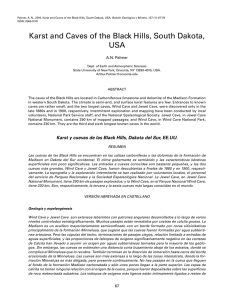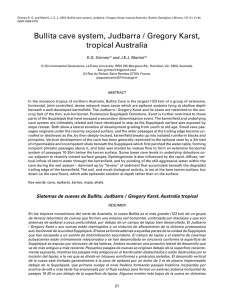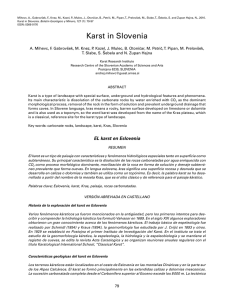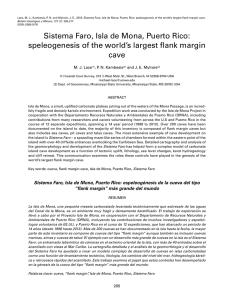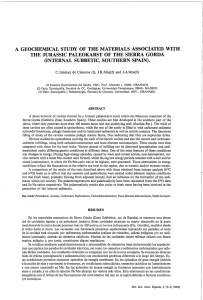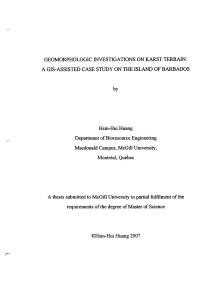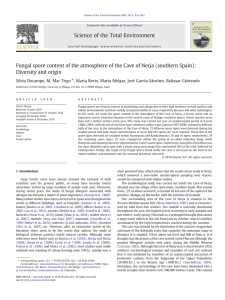what are anthodites?: reply - National Speleological Society
Anuncio
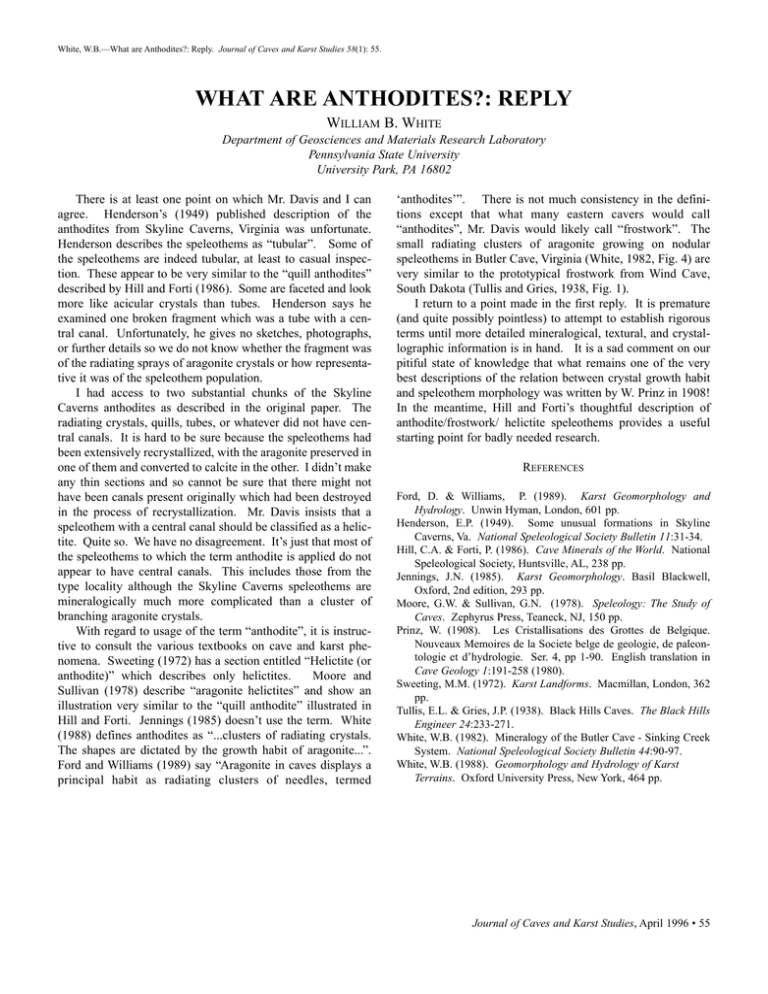
White, W.B.—What are Anthodites?: Reply. Journal of Caves and Karst Studies 58(1): 55. WHAT ARE ANTHODITES?: REPLY WILLIAM B. WHITE Department of Geosciences and Materials Research Laboratory Pennsylvania State University University Park, PA 16802 There is at least one point on which Mr. Davis and I can agree. Henderson’s (1949) published description of the anthodites from Skyline Caverns, Virginia was unfortunate. Henderson describes the speleothems as “tubular”. Some of the speleothems are indeed tubular, at least to casual inspection. These appear to be very similar to the “quill anthodites” described by Hill and Forti (1986). Some are faceted and look more like acicular crystals than tubes. Henderson says he examined one broken fragment which was a tube with a central canal. Unfortunately, he gives no sketches, photographs, or further details so we do not know whether the fragment was of the radiating sprays of aragonite crystals or how representative it was of the speleothem population. I had access to two substantial chunks of the Skyline Caverns anthodites as described in the original paper. The radiating crystals, quills, tubes, or whatever did not have central canals. It is hard to be sure because the speleothems had been extensively recrystallized, with the aragonite preserved in one of them and converted to calcite in the other. I didn’t make any thin sections and so cannot be sure that there might not have been canals present originally which had been destroyed in the process of recrystallization. Mr. Davis insists that a speleothem with a central canal should be classified as a helictite. Quite so. We have no disagreement. It’s just that most of the speleothems to which the term anthodite is applied do not appear to have central canals. This includes those from the type locality although the Skyline Caverns speleothems are mineralogically much more complicated than a cluster of branching aragonite crystals. With regard to usage of the term “anthodite”, it is instructive to consult the various textbooks on cave and karst phenomena. Sweeting (1972) has a section entitled “Helictite (or anthodite)” which describes only helictites. Moore and Sullivan (1978) describe “aragonite helictites” and show an illustration very similar to the “quill anthodite” illustrated in Hill and Forti. Jennings (1985) doesn’t use the term. White (1988) defines anthodites as “...clusters of radiating crystals. The shapes are dictated by the growth habit of aragonite...”. Ford and Williams (1989) say “Aragonite in caves displays a principal habit as radiating clusters of needles, termed ‘anthodites’”. There is not much consistency in the definitions except that what many eastern cavers would call “anthodites”, Mr. Davis would likely call “frostwork”. The small radiating clusters of aragonite growing on nodular speleothems in Butler Cave, Virginia (White, 1982, Fig. 4) are very similar to the prototypical frostwork from Wind Cave, South Dakota (Tullis and Gries, 1938, Fig. 1). I return to a point made in the first reply. It is premature (and quite possibly pointless) to attempt to establish rigorous terms until more detailed mineralogical, textural, and crystallographic information is in hand. It is a sad comment on our pitiful state of knowledge that what remains one of the very best descriptions of the relation between crystal growth habit and speleothem morphology was written by W. Prinz in 1908! In the meantime, Hill and Forti’s thoughtful description of anthodite/frostwork/ helictite speleothems provides a useful starting point for badly needed research. REFERENCES Ford, D. & Williams, P. (1989). Karst Geomorphology and Hydrology. Unwin Hyman, London, 601 pp. Henderson, E.P. (1949). Some unusual formations in Skyline Caverns, Va. National Speleological Society Bulletin 11:31-34. Hill, C.A. & Forti, P. (1986). Cave Minerals of the World. National Speleological Society, Huntsville, AL, 238 pp. Jennings, J.N. (1985). Karst Geomorphology. Basil Blackwell, Oxford, 2nd edition, 293 pp. Moore, G.W. & Sullivan, G.N. (1978). Speleology: The Study of Caves. Zephyrus Press, Teaneck, NJ, 150 pp. Prinz, W. (1908). Les Cristallisations des Grottes de Belgique. Nouveaux Memoires de la Societe belge de geologie, de paleontologie et d’hydrologie. Ser. 4, pp 1-90. English translation in Cave Geology 1:191-258 (1980). Sweeting, M.M. (1972). Karst Landforms. Macmillan, London, 362 pp. Tullis, E.L. & Gries, J.P. (1938). Black Hills Caves. The Black Hills Engineer 24:233-271. White, W.B. (1982). Mineralogy of the Butler Cave - Sinking Creek System. National Speleological Society Bulletin 44:90-97. White, W.B. (1988). Geomorphology and Hydrology of Karst Terrains. Oxford University Press, New York, 464 pp. Journal of Caves and Karst Studies, April 1996 • 55
